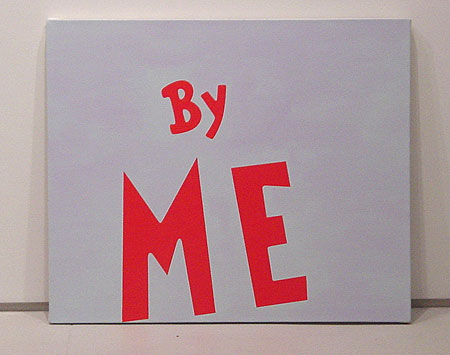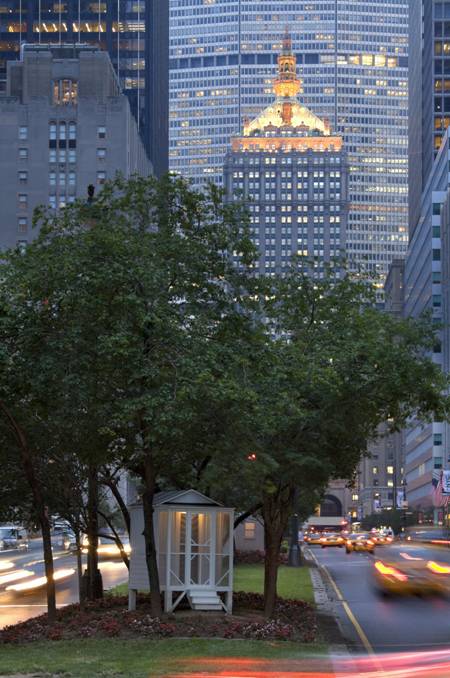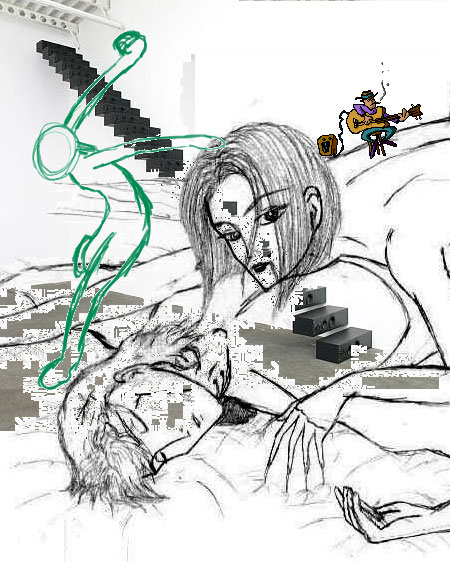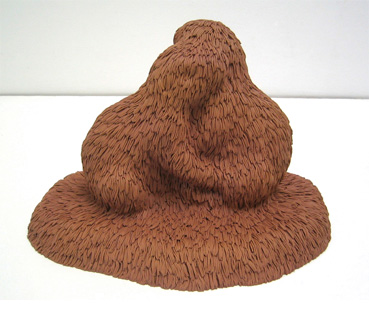

Top: Unnamed hippie gallery that doesn't allow photos (or so they told me after this was taken)--presumably so you will not take your fuzzy 45 degree angle snapshots and correct them in a computer and sell the resulting imperfect images as prints on a blanket out on the street. Or because soul-capturing photos destroy the gallery's contemplative pan-cultural vibe (if you can ignore the half-drunk cocktails and cigarette butts on the stairs outside). These people have been sending me press releases for their shows so I take that as an implied waiver of any "no publicity" rule.
Bottom: Image in the back room of the Carl Ostendarp retrospective at Elizabeth Dee. Linguists might call this painting a nugatory declarative illocutionary speech act, in that it answers the question "who is this painting by?" without giving any actual information.




